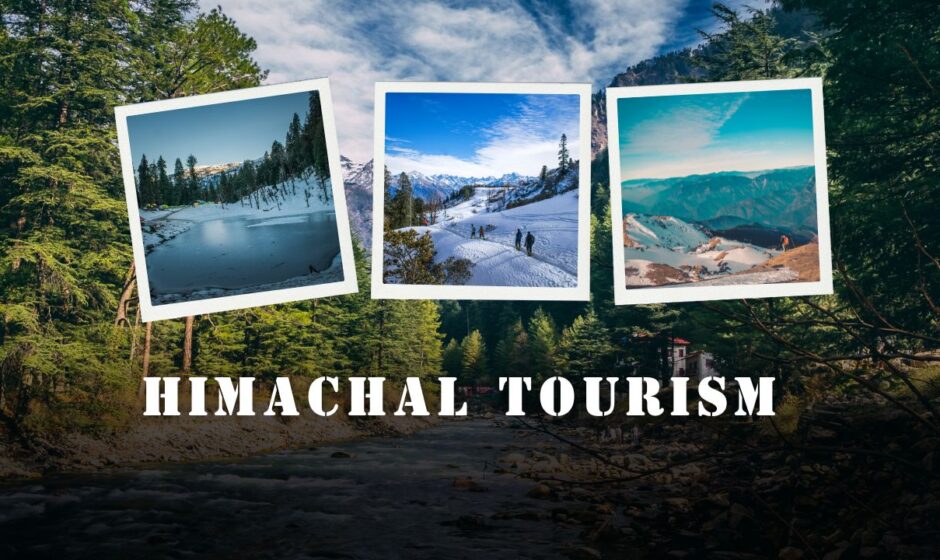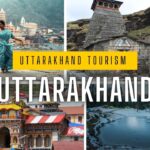Introduction to Himachal Tourism
Himachal Tourism offers more than just mountains—it is a deep dive into traditions, local living, peaceful towns, and unforgettable treks. From temple bells in Mandi to apple orchards in Kinnaur, this state invites both solo travelers and families to step into its rhythm. While the snow brings skiers to Solang, the summer draws peace-seekers to Tirthan Valley. Himachal Pradesh is not a place you pass through—it’s a place that stays with you.
Himachal Tourism has gradually moved away from just being a honeymoon or hill station destination. Today, it attracts adventure lovers, spiritual seekers, digital nomads, and storytellers from across the globe. Each district has its own pulse, language, and pace.
Cultural Highlights of Himachal Tourism
In Himachal, culture isn’t a performance—it’s part of daily life. Himachal Tourism gives travelers a peek into unique local customs like the Naati dance of Kullu, the masked Chham dance of Lahaul-Spiti, and the centuries-old fairs held in village courtyards.
Homes in villages are still built in Kath-Kuni style, with stone and wood architecture meant to withstand earthquakes and cold. Walk through old parts of towns like Chamba or Sarahan, and you’ll find wooden temples, slate rooftops, and women weaving in silence.
The local deities play a big role here. In fact, people often ask their gods for permission before big decisions, including festivals and town meetings. Himachal Tourism allows outsiders to witness this spiritual depth not found in guidebooks or travel posters.
Trekking and Trail Life in Himachal Tourism
For those who love walking more than riding, Himachal Tourism provides miles of trails—some short and quiet, others wild and demanding. The Great Himalayan National Park, now a UNESCO site, offers trekking routes where human noise feels foreign.
Some of the most sought-after treks under Himachal Tourism include:
-
Hampta Pass – Connects the lush green Kullu valley to the dry Spiti region.
-
Pin Parvati Pass – Not for beginners, this one challenges both body and mind.
-
Prashar Lake Trail – A weekend-friendly hike with views of Dhauladhar ranges.
-
Buran Ghati Trek – Hidden gem in the Pabbar Valley region.
These trails aren’t just about the view—they often pass through shepherd hamlets, glacier-fed streams, and forests filled with Himalayan birch and deodar trees.
Winter in Himachal Tourism: More Than Just Snow
Snowfall changes the rhythm of life in Himachal. Roofs turn white, roads slow down, and fireplaces come alive. But Himachal Tourism during winter isn’t limited to Shimla or Manali.
Villages like Kalpa, Rakchham, and Shoja offer a quieter snow experience. No traffic, no crowds—just you and the winter silence. For those who enjoy skiing or snowboarding, Himachal Tourism promotes areas like:
-
Solang Valley – Close to Manali, ideal for beginners.
-
Narkanda – Known for winter sports and apple orchards.
-
Kufri – A compact option for families and casual visitors.
Winter here teaches patience. It’s when Himachal slows down, and if you’re tuned in, you’ll notice the stillness of snowfall has its own language.
Spiritual Paths and Inner Journeys
Many parts of Himachal are places of deep inner quiet. Himachal Tourism includes many pilgrimage circuits—whether it’s the temples of Chamba or the monasteries of Spiti.
The Tibetan influence is particularly strong in places like McLeod Ganj, Tabo, and Key Monastery. Here, travelers can attend early morning prayers, walk in silence, or join meditation retreats.
On the other hand, the Hindu side of Himachal Tourism includes famous shrines like:
-
Bhima Kali Temple in Sarahan
-
Hadimba Temple in Manali
-
Jwalamukhi Temple in Kangra
-
Chintpurni and Naina Devi – Both are Shakti Peeths, drawing thousands of pilgrims
This mix of faiths living side by side in peace is a quiet strength of Himachal Tourism.
Local Foods That Define Himachal Tourism
Food in Himachal is rooted in what grows in its fields and forests. Forget restaurant chains—the real flavor is found in a village kitchen or local dhaba. Himachal Tourism encourages the tasting of native dishes like:
-
Siddu – A steamed wheat bun stuffed with local herbs or meats
-
Madra – A chickpea curry rich with curd, native to Chamba and Kangra
-
Tudkiya Bhath – A spiced pulao from the Chamba region
-
Thukpa and Momos – Especially popular in Spiti and McLeod Ganj
Seasonal produce plays a big part. Apples in autumn, leafy greens in spring, and fermented foods during harsh winters. Each meal reflects the terrain and weather around it.
Himachal Tourism for Slow Travelers
Some people arrive in Himachal for a week and stay for a year. Himachal Tourism has become a choice for those tired of city life, loud beaches, or over-commercialized travel. Towns like Bir, Jibhi, and Barot are perfect for those seeking to pause and breathe.
These places offer more than views—they offer connection. Stay with a local family, help in their orchard, join them during village fairs. This kind of travel doesn’t need a selfie every hour. It’s about slipping into the natural rhythm of the place.
Remote homestays, community cafes, and co-working cottages are now part of the modern Himachal Tourism ecosystem. It’s no longer just hotels and taxis—it’s about sharing space with those who call the mountains home.
Offbeat Places in Himachal Tourism
Not everyone wants to visit the usual tourist towns, and that’s where Himachal Tourism shines. Some less-heard but deeply enriching places include:
-
Tirthan Valley – Known for trout fishing and riverside walks
-
Pangi Valley – Still largely untouched, best visited during early autumn
-
Barot – A small valley town with a hydroelectric project and trout farms
-
Sangla and Chitkul – Beautiful villages on the edge of India
-
Shoja – Perfect for travelers who want to do nothing for a few days
These places are not built for crowds. They’re meant for those willing to sit on a bench, listen to the wind, and appreciate the sound of silence.
Himachal Tourism and Sustainability
Tourism is growing rapidly, but with it comes pressure on Himachal’s ecology. Forests are thinning, waste is increasing, and traditional ways of life are under strain. Himachal Tourism today is trying to balance welcoming guests with protecting its roots.
Efforts include:
-
Promoting homestays over commercial resorts
-
Organizing clean-up treks with locals
-
Using solar energy in remote villages
-
Training locals in eco-tourism practices
Travelers are also asked to do their part: carry back their waste, respect local customs, and choose businesses that support the community. Himachal Tourism isn’t just about taking memories—it’s about traveling responsibly.
The Role of Local Communities in Himachal Tourism
What makes Himachal Tourism feel real is the people. Whether it’s a chai seller near Jalori Pass, a grandmother in Kullu showing her knitting, or monks in Key Monastery—it’s their warmth that stays long after the journey ends.
Many locals are now taking active roles in tourism:
-
Women running homestays in remote areas
-
Youth working as trek guides or birding experts
-
Farmers opening their orchards to visitors during harvest season
This shift is not just bringing income—it’s restoring pride in local knowledge and craft. Himachal Tourism is growing from within, with locals shaping how their stories are shared.
Conclusion
Himachal Tourism isn’t about ticking places off a list—it’s about experiences that change the way you see the world. Whether you come for the walks, the festivals, or the peace, the mountains will find a way to stay with you.
Every corner, every trail, every local dish tells a story. You just need to take the time to listen. That’s the real beauty of Himachal Tourism—it meets you where you are, and takes you somewhere deeper.



